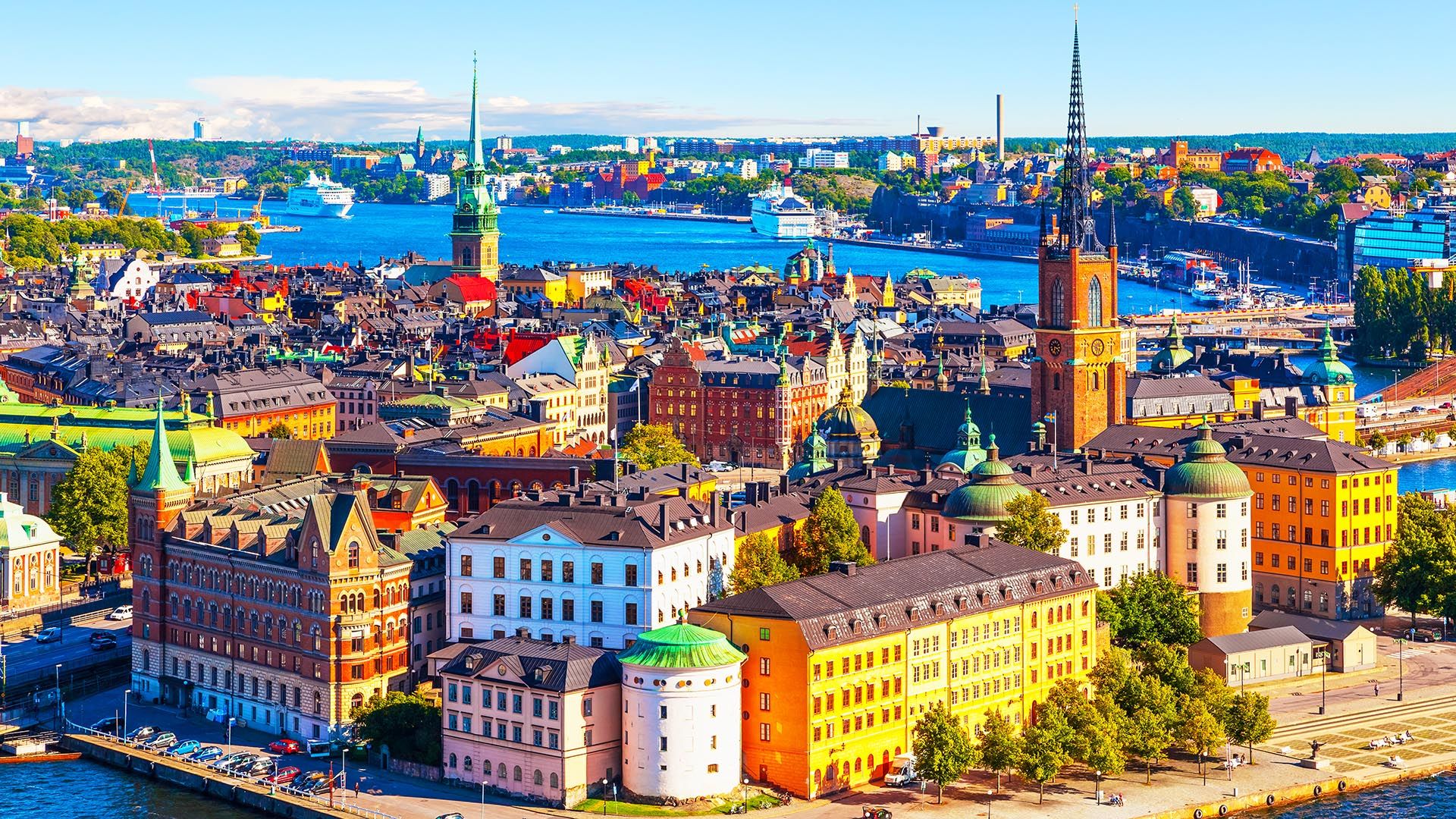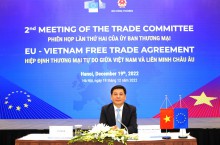The News
Characteristics and market development trends for some typical products in Slovenia
The Republic of Slovenia is a country in central and southern Europe and a member of the European Union (EU). Although it is a small country with more than 2 million people, the trade turnover between Slovenia and Vietnam reaches 300-400 million USD/year.
The Republic of Slovenia is a country in central and southern Europe and a member of the European Union (EU). Although it is a small country with more than 2 million people, the trade turnover between Slovenia and Vietnam reaches 300-400 million USD/year.
- Slovenian market characteristics
The Republic of Slovenia is a country in central and southern Europe and a member of the European Union (EU). Although it is a small country with more than 2 million people, the trade turnover between Slovenia and Vietnam reaches 300-400 million USD/year.
In terms of economy structure, the service sector accounts for a high proportion of GDP (66%), followed by industry (32%) and agriculture (2%). Exports are an important driver of Slovenia's economic development, with exports of goods and services accounting for more than 84% of GDP in 2019 (higher than the EU 19 average of 47%).
The service sector remains the largest contributor to the economic structure, with key sectors such as information and communication technology, finance and banking, insurance, trade, transportation and retail wholesale. The tourism industry is also very dynamic and is in a period of strong development.
Slovenia's key industries include: metallurgy, iron and non-ferrous metal production; mining: aluminum, lead, zinc; plastics industry; electrical and electronic equipment, including military electronics; chemicals and pharmaceuticals; food processing industry; truck manufacturing; machine tools; electrical equipment manufacturing; furniture; textiles; paper.
Agriculture uses about 24% of the territory of Slovenia. Due to the trend of reducing agricultural land and increasing conversion into business land, Slovenia is increasingly importing food to meet the needs of the domestic market. Important agricultural products are malt, corn, wheat, potatoes, corn, apples, pears, cattle, sheep, poultry.
Slovenia is fully open to foreign investment, in line with European Union and OECD principles, and does not discriminate between domestic and foreign investors. The economic sectors that attract the most FDI include manufacturing (especially metal products, electrical and optical equipment, and components for the automotive sector), chemical products, products from plastic materials, paper, pharmaceuticals, rubber, wholesale, retail and financial business consulting.
Slovenia has a prime geographical location with the Port of Koper being the entry to do business with Europe, especially for companies from the Eastern region. With the use of Koper Port, cargo from the Eastern region can arrive at their destination 8 days earlier than using other Nordic ports.

2. Import and export situation of Slovenia
In 2021, Slovenia's exports reached EUR 39.4 billion, an increase of 19.8% compared to 2020. Imports reached EUR 42 billion, up 30.8%. The trade deficit amounted to EUR 2.6 billion and was the highest in the last ten years.
In 2021, Slovenia mainly exported goods to Germany (17.3% of total goods exports), followed by Switzerland (13.4%), Italy (10.7%), Croatia (7.9%) and Austria (6.6%). Slovenia's main import partners include Germany (14.9% of total imports), Italy (11.3%), Switzerland (10.1%), China (10.0%) and Austria (8.8%).
Slovenia's main export products are: chemicals (accounting for 21% of total imports), transport vehicles (11%), electrical equipment and components (11%), mechanical equipment and nuclear equipment (10%), plastic products (4%). Slovenia's main imported products are: pharmaceuticals (13%), electrical equipment and components (10%), transport vehicles (9%), chemicals (9%), mechanical and nuclear equipment (8%), oil and gas (8%), plastic products (5%).
3. Bilateral trade relations between Vietnam and Slovenia
The economic and trade cooperation between Vietnam and Slovenia has made great progress, increasing more than 36 times since 2005. Up to now, the import-export turnover between the two countries has reached about 499 million USD in 2021. Vietnam's exports to Slovenia reached 440 million USD; imports from Slovenia to Vietnam reached 59 million USD, mainly pharmaceuticals, fertilizers, machinery. In recent years, Vietnam's two main exports to Slovenia are: machinery, equipment, other spare parts and computers, electronic products and components. These two products usually account for 65-75% of Vietnam's total exports to Slovenia.
In the first 6 months of 2022, Vietnam - Slovenia two-way trade reached about 291 million USD, up 24% over the same period in 2021. Vietnam's export turnover to Slovenia reached 263 million USD, up 29%; Vietnam's import turnover from Slovenia reached 28 million USD, down 10%. By the end of May 2022, Slovenia ranks 89th out of 139 countries and territories with investment in Vietnam with 3 valid investment projects, total registered capital of 2.3 million USD.
In the second half of 2022, global supply chain disruptions and continued escalation of logistics costs are the two main factors that could significantly affect Vietnam's bilateral trade with Austria and Slovenia.
Although the growth rate is very impressive, the trade turnover between Vietnam and Slovenia is still modest, the potential to expand trade is huge. In particular, the customs and consumption needs of Slovenians are relatively suitable for Vietnamese goods. Therefore, Vietnam has a lot of opportunities to penetrate deeper in the Slovenian market, especially for seafood, agricultural products, textiles and footwear, handmade products.
In terms of potential, Slovenia's strengths such as paper industry, electronics industry, shipping, logistics and some areas related to the processing industry can be actively utilized in the Vietnamese market. Slovenia can become a bridge for Vietnamese goods to penetrate and develop market share in the EU market, especially eastern and southeastern European countries. Vietnam is the gateway for Slovenian businesses to access the ASEAN market.



